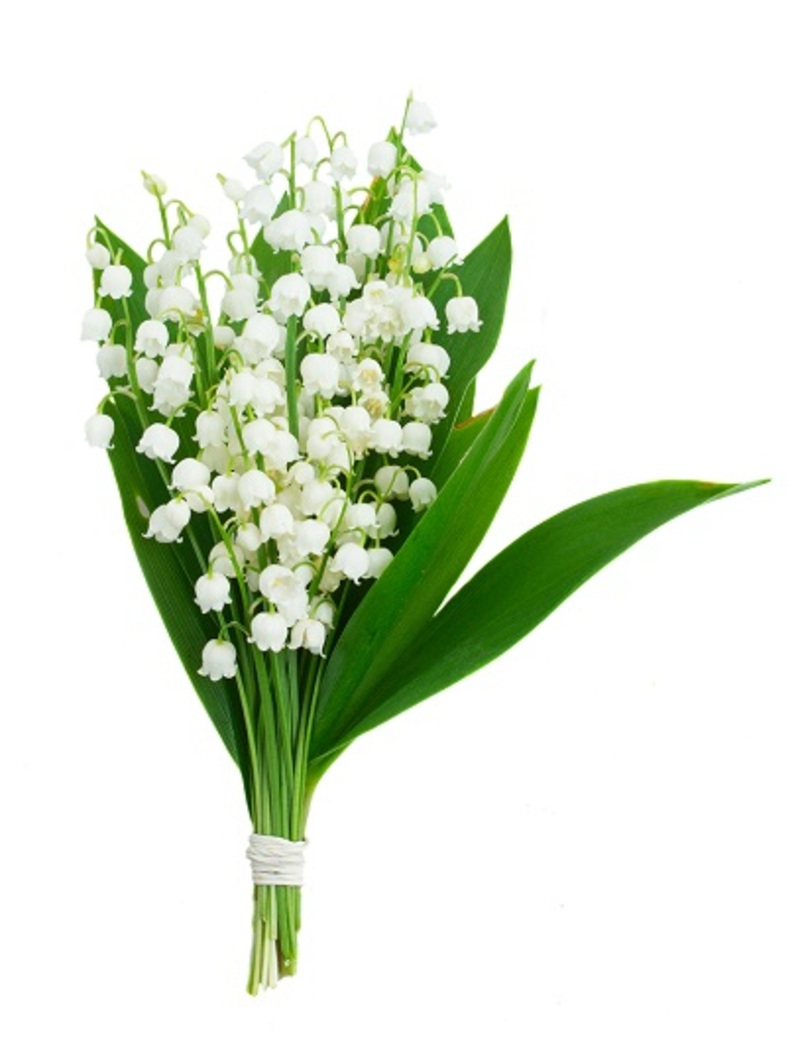Ensuring Your Poinsettias Thrive Past the Holidays
Posted on 17/08/2025
Ensuring Your Poinsettias Thrive Past the Holidays
Poinsettias are a festive favorite, instantly recognizable during the holiday season for their vibrant bracts and green foliage. But what happens when the decorations come down and January arrives? For most, these beautiful plants become little more than a memory. But it doesn't have to be this way! With the right care, your poinsettias can thrive well past the holidays and even bloom year after year. In this comprehensive guide, you'll learn everything you need to know about helping poinsettias thrive post-Christmas, from optimal care tips to troubleshooting common issues and even reblooming secrets.

Understanding Poinsettia Basics: Beyond Seasonal Beauty
Before we dive into post-holiday care, it helps to understand what makes poinsettias unique. Originally native to Mexico, Euphorbia pulcherrima--commonly known as the poinsettia--has become synonymous with winter celebrations. Contrary to popular belief, the brilliant red, pink, or white "flowers" are actually colored bracts, or modified leaves, surrounding the plant's small yellow flowers at the center.
- Botanical Name: Euphorbia pulcherrima
- Family: Euphorbiaceae
- Perennial or Annual? Perennial shrub in its native habitat
- Hardiness: USDA Zones 9-11 (grown as a houseplant elsewhere)
- Flowering Season: Winter (indoors), Late Fall to Early Spring (outdoors, tropical climates)
By understanding the natural rhythm of poinsettia plants, you're already a step ahead in keeping them healthy and happy after the holidays.
Essential Care for Poinsettias After the Holidays
How can you ensure your poinsettia flourishes once its role as a Christmas decoration is over? Here's how to care for poinsettias after the holidays:
1. Light: The Key Ingredient
*Poinsettias crave light.* Once the tree is packed away, move your plant to a spot with bright, indirect light. Near a south or east-facing window is ideal for maintaining vibrant bracts and healthy growth. Avoid direct sunlight, which can scorch the leaves.
- Minimum 6 hours of sunlight per day
- Rotate your plant weekly for even growth
- If natural light is lacking, consider supplementing with a grow light
2. Temperature: Keep It Cozy, Not Hot
Poinsettias prefer stable temperatures between 60-72? F (16-22? C) during the day, with nighttime temps dropping no lower than 55? F (13? C). Rapid fluctuations or drafts can cause leaf drop. Keep them away from cold windows, radiators, and heating vents.
- Avoid temperatures below 50? F (10? C)
- No sudden temperature swings
- No placing near exterior doors or fireplaces
3. Watering Wisely: Avoiding Root Rot
The quickest way to doom any post-holiday poinsettia is through improper watering. These plants need consistent moisture but hate soggy roots. Here's how to know when and how much to water:
- Check soil moisture daily--water when the top inch is dry
- Use room temperature water
- Water thoroughly so water drains out the bottom--do not let the pot sit in excess water
- Discard decorative foil sleeves or poke drainage holes
*Underwatering* leads to wilting and bract drop, while *overwatering* can cause root rot.
4. Humidity: Mimic a Tropical Winter
In their native Mexican highlands, poinsettias enjoy moderate humidity. Typical winter indoor air is very dry due to heating systems. You can help by:
- Misting leaves every few days
- Placing a tray of pebbles and water under the pot (don't let the roots touch the water)
- Grouping poinsettias with other houseplants to create a mini-humid zone
5. Fertilizing: When to Feed Your Poinsettia
After the holidays, as your plant moves out of its active bloom period, you can begin light fertilizing. Use a balanced, water-soluble houseplant fertilizer at half strength once every 3-4 weeks starting in late winter or early spring. Hold off on fertilizing if your poinsettia is still in full bloom or if it's recently been stressed.
6. Pruning: Encouraging Bushiness and Future Blooms
Once the colorful bracts begin to fade (typically February or March), prune your poinsettia back to about 5-6 inches above the soil. This encourages a fuller, bushier shape come spring and summer. Don't be afraid to cut back hard; the plant will respond with vigorous new growth.
- Use sharp, clean pruning shears
- Remove faded bracts and dead stems
- Wear gloves--poinsettias exude a milky sap that can irritate skin
Seasonal Care Calendar for Poinsettias
To help your poinsettia thrive long after Christmas, here's a simple care calendar:
- January-March: Maintain good light and watering, prune as bracts fade
- April-May: Continue watering and feeding, encourage new growth
- June: If desired, move outside when nights stay above 55?F (13?C)
- July-August: Pinch back new stems to create a bushy plant
- September: Prepare to move back indoors before cool nights return
- October-November: Begin darkness treatment for reblooming (see below)
Reblooming Poinsettias: A Step-By-Step Guide
It's possible to coax your poinsettia to bloom again for the next holiday season, but it does require some commitment! The secret lies in a period of darkness, which triggers the development of colorful bracts.
Triggering Color: The Darkness Regimen
Starting in late September or early October:
- Give your plant 14-16 hours of darkness each night for 8-10 weeks
- Place the plant in a closet, box, or cover with an opaque container from 5 PM to 8 AM
- During the day, place in bright, indirect light
- Continue watering and occasional feeding
If you forget or miss a few days, don't panic--a consistent regimen is more important than absolute perfection. After 2 months, resume normal lighting. With luck, you'll see new colorful bracts emerging in time for the holidays!
Common Problems and Solutions for Post-Holiday Poinsettias
Leaf Drop
Why it happens: Sudden changes in temperature, drafts, overwatering, or too little light.
Solution: Find a stable, bright spot; water properly; avoid cold and drafts.
Yellowing Leaves
Why it happens: Typically from overwatering or poor drainage.
Solution: Check drainage; allow the soil to partially dry before watering again; never let the root ball sit in standing water.
Dull Bracts or Loss of Color
Why it happens: Inadequate light or fertilizer; natural post-bloom cycle.
Solution: Ensure at least 6 hours of bright, indirect sun and feed according to plant needs.
Pests
Common pests: Whiteflies, spider mites, aphids.
Solution: Inspect regularly; treat infestations early with insecticidal soap or neem oil.
Repotting Your Poinsettia
If your poinsettia starts to outgrow its container or roots poke through the drainage holes, it's time to move to a slightly larger pot. The best time to repot is in early spring, just as new growth begins.
- Choose a pot one size larger with drainage holes
- Use fresh, well-draining potting mix
- Water gently until runoff appears
Poinsettias Outdoors: Is It Possible?
If you live in USDA zones 9 to 11--think southern Florida, Texas, or California's low elevations--your poinsettia can spend summer or even live year-round outdoors. Choose a spot with bright, filtered sunlight and protection from wind. In other regions, only move plants outdoors once all danger of frost has passed, and always bring them inside before night temperatures dip below 55?F (13?C).
Myths and Facts: Are Poinsettias Toxic?
A common myth is that poinsettias are dangerously poisonous. In truth, while their milky sap can cause mild stomach upset and skin irritation in pets and humans, it takes large quantities to do any real harm. Still, it's smart to keep them out of reach of curious children and pets. Wash skin with soap and water if contact occurs.
Creative Display Ideas for Poinsettias After the Holidays
- Mix with Greenery: Blend faded-pointed poinsettias with other green houseplants for a lush indoor garden look.
- Spring Centerpiece: Use the pruned shoots in table arrangements to showcase glossy green leaves.
- Outdoor Patio Plant: When safe, move potted poinsettias outdoors for a bold pop of color on the deck or porch.

Frequently Asked Questions About Long-Term Poinsettia Care
How long will my poinsettia last after the holidays?
With proper care, a poinsettia can flourish as a green foliage plant for months and potentially rebloom the following year. Some enthusiasts keep their poinsettias for years!
Can I propagate my poinsettia?
Yes! Take 3-4 inch cuttings from healthy stems in late spring or early summer. Dip the cut end in rooting hormone and plant in moist, sterile soil under indirect light. Roots will form in 4-6 weeks.
What if my poinsettia doesn't rebloom?
Don't worry! Even without showy bracts, the plant makes a handsome houseplant. Try the darkness regimen more precisely the next year, and be patient--poinsettia reblooming is a skill, not a science.
Conclusion: Enjoy Your Poinsettias All Year
*Ensuring poinsettias thrive past the holidays* requires a little extra attention, but the reward--a healthy, thriving, and potentially reblooming plant--is worth it. Remember the basics: strong, indirect light; careful watering; consistent temperatures; and a patient approach, especially if you want those signature bracts next December.
With the information in this article, you're now well-equipped to help your holiday poinsettia transition into a long-lasting, beautiful part of your home. Why not make it a tradition? With a little care, your poinsettias can truly become a cherished feature through every season.
Want more plant care tips? Bookmark this page and revisit each season to keep your poinsettias healthy, happy, and vibrant!
Latest Posts
Ensuring Your Poinsettias Thrive Past the Holidays
The Ultimate Handbook for Perfect Orchid Care
The poetic narratives found in the colors and symbolism of Peony flowers






